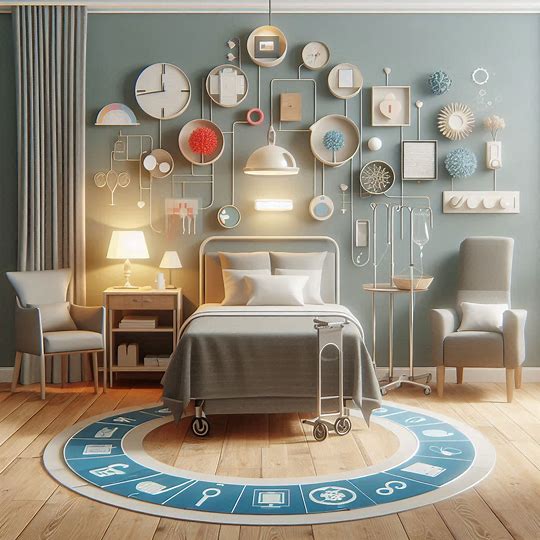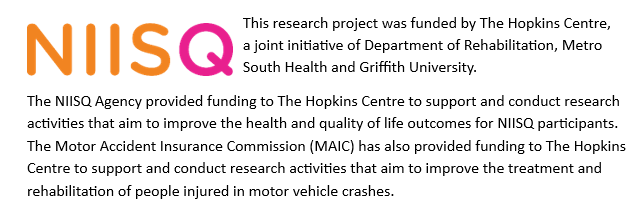SEED PROJECT: If, How and Why Patients Modify and Personalise Their Rooms in Inpatient Neurorehabilitation Environments
About the Project
Chief Investigator: Kaitlyn Spalding

About
Recovering from neurotrauma can involve weeks or months in specialised hospital settings, most of which patients spend in their rooms. Promisingly, enriched environments can positively affect mood, anxiety, and depression, after neurotrauma. Despite evidence of the physical environment's importance to patients' health, we do not know if, how, and why patients personalise their rooms where they spend most of their time. This lack of knowledge limits our understanding of how hospital environments can be personalised to support rehabilitation.
Aim and objective
Our aims are (i) to explore if, how, and why inpatients in neurorehabilitation environments personalise and/or modify their environment and, (ii) to understand the effect personalisation and modification of the inpatient environment has on patient experiences.
Expected outcomes
The knowledge generated from this project will contribute valuable insights into the relationship between the inpatient neurorehabilitation environment and patient experiences in fostering supportive healthcare spaces. There is opportunity for immediate translation into practice by summarising the results into a guideline for end-users that discuss room personalisation and modification, detailing which elements influence patient experience. This guide can be given to clinicians and patients/families. Doing so can immediately improve the patient experience across the two sites resulting in end-user benefits.
Expected Impact
Scalability is also easy to implement. Developed guides could also be easily made available and distributed to any hospital and healthcare environment as it is anticipated to be easy information to relay through visual and written material.
Further the results can inform future research on the development of a co-design intervention around the importance of personalised enriched environments in the rehabilitation space.
Finally, papers published in high impact journals will promote knowledge translation internationally.
Results
This project will commence in the second half of 224, with results to follow.
People/organisations involved
- Ms Kaitlyn Spalding The Hopkins Centre, Griffith University
- Dr Michael Norwood The Hopkins Centre, Griffith University
- Ms Susan Jones Neurosciences Rehabilitation Unit, Gold Coast University Hospital
- Dr Leslie Gan Rehabilitation and Geriatrics, Logan Hospital
- Professor Louise Gustafsson The Hopkins Centre, Griffith University
- Ms Chelsea Marsh The Hopkins Centre, Griffith University
- Ms Hannah Simmonds The Hopkins Centre, Griffith University
- Ms Rakapa Te Pau Konui Neurosciences Rehabilitation unit, Gold Coast University Hospital
- Ms Jacinta Lewis Rehabilitation and Geriatrics, Logan Hospital
- Ms Amanda McAuley Clinical Facilitator Gold Coast University Hospital
Project status
- Research ethics and governance approved and materials developed (2024)
- Data collection in progress (2024 and 2025)
- Next steps to analyse data and share findings (mid-late 2025)
- Final reports completed, research publications and result dissemination (late 2025)

View All Researchers

